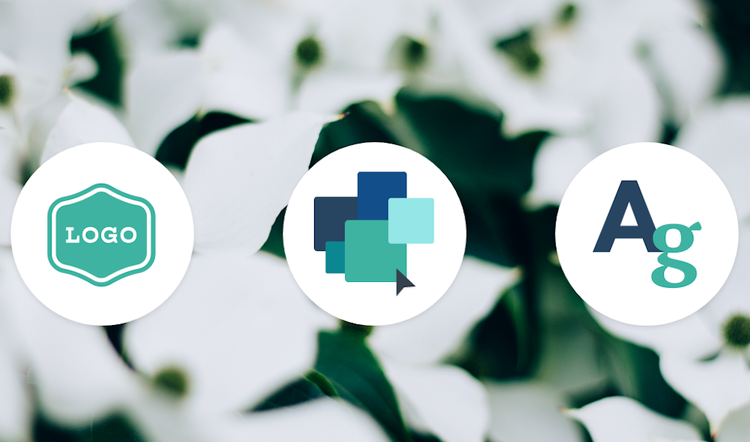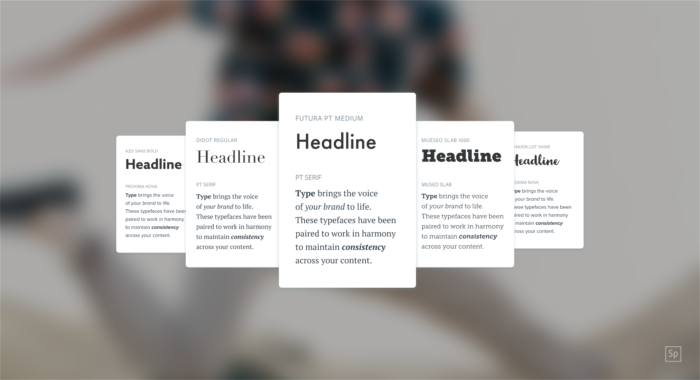What’s in a Brand? How to Define Your Visual Identity

A bad first impression is hard to shake, especially when you’re competing against millions of contenders online. Princeton researchers found that within 0.1 seconds, people form judgements about the likeability, trustworthiness, competence, attractiveness, and aggressiveness of faces in photos they were shown. What judgement will people form about your brand in the first 0.1 second of exposure?
“With that reaction time,” stated marketing expert Leonard Kim, “you need a clean and crisp visual representation of your brand. Otherwise, people may associate your brand with being cheap, unreliable, or even untrustworthy.”
It’s clear a strong visual identity is important, but what exactly is a visual identity? And how do you create one?
Understanding Visual Identity
Your visual identity comprises your logo, imagery, typography, colors, and creative design. It’s easy enough to list them out, but how do you get to the heart of how these elements communicate to your customers who you are, what you stand for, and why they should be loyal to you?
For answers, we turned to branding experts Kim, of Influence Tree, David Brier, of Rising Above the Noise, and Ben Matthews, director of design at Adobe Express, a one-stop shop for creating visual stories.

Your brand’s visual identity is its style, said Matthews, who has helped translate brands into experiences while at LG, eBay, and, now, Adobe. If brands are people, then visual identity is the walk, the talk, the clothes, and the hair, he told us. Does your brand strut down the street, flinging long blonde hair and rocking a peacock feather jacket, or does it somberly stroll in a well-tailored suit? Maybe you decided—instantly—that the peacock persona was wild and fun, while the well-tailored suit was competent and mature. That’s a first impression working its magic.
If you are building your visual identity from the ground up, Matthews recommended collecting inspiration from all over. Take pictures. Gather postcards. Go to Pinterest and make a mood board. There’s so much value already out there that you don’t have to re-create the wheel. Take notes on what you like about existing brands and what you don’t like.
“Knowing your audience is really important,” he said. “Decide how you want to resonate with them and continually tie that back to your core values.”
The key, he added, is to start from what you know and believe strongly, and let your brand evolve from a core, unwavering understanding of your mission. “Even if it’s just your name in a simple typeface, you can build from there,” Matthews said. “Your visual identity can mature with a symbol or icon later. And maybe sometimes it’s good to give your brand some time to resonate, find its path forward, and understand where your end goal is.”
Keep in mind, he added, “It’s good to be aspirational and absorb all the intricate and detailed logos out there, but in the end you just need a starting point. That may be a consistent way to represent yourself in a color, a typeface, or even just an icon. Ask yourself, ‘How is my brand going to be powerful and effective but still be simple?’ And when you’re developing your visual identity, always drive what you’re doing back to your mission to keep your brand on track.”
(For guidance on developing your brand’s core identity, read part one of this series: “A Step-by-Step Guide to Defining a Winning Online Identity.”)
As you’re developing the components of your visual identity (color, logo, type, and imagery), test the evolving identity against these questions from Kim, who has been recognized by Forbes, Inc., and Entrepreneur as a top marketing influencer:
- Am I portraying a trustworthy environment?
- Am I providing immediate value to my customer?
- What can I do to get them to want to learn and discover more about my brand?
- How can I communicate my message with the least amount of words?
- What words can I translate into images?
- How minimalistic can I be and still deliver the message that I want to convey?
Define Your Brand Elements
Part of building your brand is learning to convey the values and personality of your business through the visual elements you align with your business. “Visual identity should amplify the intended message of the brand so you want to learn more and follow along with the story. Then the story should sell customers into why they should do business with your brand,” Kim said.
At the core of this visual identity are your brand ingredients: logo, colors, type, and imagery.
Color: “Your color palette needs to fit what you are trying to convey,” Kim said. “If you’re promoting a luxury product, you may want to use blacks, golds, and silvers. If you have a financial product, you may want to incorporate greens and golds.”
Research suggests that between 62% to 90% of consumer decisions are based on color, but don’t let yourself get overwhelmed—just keep it simple to start. “In Adobe Express, our tool starts with just one color, detected from your logo or chosen manually,” Matthews explained. “Then we apply some similar ranges of color so your content will look consistent for different purposes and across various marketing surfaces and platforms.”

Logo: Your logo needs to convey what you do and have imagery that sticks into the minds of the people who see it, Kim stated. A logo can be a combination of your color palette, type, and design. A logo can also evolve as your identity evolves.
Type: Beyond what the words say, the scale, font, and arrangement of your text impact your visual identity. A funeral home that uses a playful, hot pink, comic font will confuse potential customers who are grieving. Even the best-known brands out there—such as Facebook and Apple—tend to keep it simple, Matthews said.
“Font decisions are challenging for many,” Matthews said. “We like to guide users with suggestions that eliminate some of the guesswork and are based on design intelligence from balance to hierarchy. Of course, you can always decide on your own as well.”

Consistency And Velocity Are Key
While visual identity aims to create an emotional connection with a customer, “it’s just the initial catch,” Matthews said. “Once you’ve caught the customer’s attention, the ability to retain him means being clear on the value you deliver and consistently delivering on your promises.”
Value can come in many forms: customer service, the product you deliver, or the content you create that engages your audience.
The next step is to carry the experience from end to end. “We’re trying to empower our users to create visual brand consistency,” Matthews said. “We know that it can be difficult to keep up with the velocity that today’s social media environment demands.”
This article was originally published as part of CMO.com’s October series about creativity and design-led thinking. Click here for more.
Set up your brand’s with Adobe Express premium features!